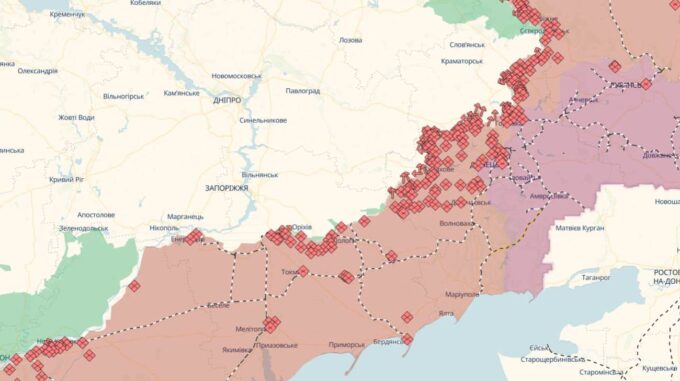British intelligence has updated data regarding the situation in Donetsk: Russian forces have made advances but have not yet been able to consolidate their gains

The British Ministry of Defence has released another analysis of the situation in Ukraine, which reports on the short-term tactical successes of Russian troops in Donetsk, focusing on areas near Kostiantynivka. This statement has become one of the latest intelligence assessments amid regular fighting that has been ongoing for over a year. In the recent review, published on May 17, British analysts note that over the past month, Russian forces have achieved small but noticeable tactical advances in Ukrainian Donetsk. Specifically, it concerns efforts near Kostiantynivka, located very close to the Slaviansk-Kramatorsk agglomeration. The intelligence highlights that the Russians have intensified assaults along three key directions, aiming to gain strategic control and expand their positions. According to British sources, fighting is underway along the axes: Chasiv Yar, approximately 12 kilometers northeast of the city; Toretsk, about 15 kilometers south and east of Chasiv Yar; and east of Pokrovsk along the N-32 highway (marked as T0504 on the map). The analysis emphasizes that the battle for control over these settlements has been ongoing for over a year. The intelligence reminds that Russia has occupied most of Chasiv Yar and Toretsk but has not fully consolidated control of these towns. The fighting continues, and Ukrainian defenders are holding their positions in several fortified buildings, managing to reduce destruction levels and prevent complete capture. Meanwhile, Russian troops have experienced difficulties in consolidating their gained positions due to active resistance from Ukrainian forces. According to the intelligence, the Russians have been able to expand their advance southwest of Kostiantynivka, pushing forward in some areas up to five kilometers. At the same time, signals have appeared that the Russians have cut off the N-32 road, which connects Kostiantynivka with Pokrovsk, opening possibilities for further advances in this direction in the coming weeks. Such a strategy could provide cover for offensive actions or help establish new tactical footholds in Donetsk. It is worth noting that in a previous British intelligence review, there were reports of a large explosion of munitions at warehouses in the Vladimir region, which caused significant concerns about the state of Russia's military arsenal. Before these events, British analysts also suggested that Russia might face the highest losses in this war by 2025, sparking additional speculation about Russia’s long-term defensive capabilities. Thus, although Russian forces have achieved minor tactical advances in the Donetsk area, their gains remain unstable and weakly consolidated. Ukraine has managed to maintain defense at key points, preventing the complete capture of strategic targets, which again underscores the complexity and dynamism of the front situation. The coming weeks will be crucial in determining the further course of hostilities and the efforts of both sides, as Russia seeks to secure its positions, and Ukrainian forces aim to thwart the enemy’s plans and restore strategic balance.

